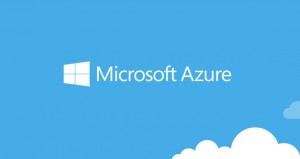One of the reasons why cloud computing has grown so popular over the past couple of years is because of how ubiquitous unstructured and semi-structured data is.
Cloud environments can scale to store this information, even when it’s being processed in real-time.
How does this affect those enrolling in Microsoft certification courses? Microsoft’s Azure teams are working assiduously to improve the infrastructure’s data-crunching capabilities. The Redmond, Washington-based giant is acknowledging that many enterprises have the desire to analyze information as it’s funneling into cloud-hosted applications, warehouses and platforms.
Riding the Storm
 One particular solution that supports real-time data aggregation and analysis is Apache Storm, a Hadoop application. According to Hortonworks, Storm enhances Hadoop clusters by allowing them to efficiently handle miscellaneous workloads in real-time, interactively or as batches. The source lauded the tool as one that’s easy to use, as it enables developers to create Storm topologies with any programming language.
One particular solution that supports real-time data aggregation and analysis is Apache Storm, a Hadoop application. According to Hortonworks, Storm enhances Hadoop clusters by allowing them to efficiently handle miscellaneous workloads in real-time, interactively or as batches. The source lauded the tool as one that’s easy to use, as it enables developers to create Storm topologies with any programming language.
When analytics is paired with storms capabilities, Hortonworks maintained the solution can help a variety of businesses perform a number of tasks, for example:
- Retailers can improve their personalized product offers
- Financial services are better able to prevent security fraud and compliance violations
- Production companies can deduce when machine failures are likely to occur and enhance quality assurance endeavors
- Storm provides websites with an efficient workload allocation algorithm that hinders operational issues from occurring
The yellow elephant in the room
Microsoft has recognized the aforementioned benefits and has incorporated Storm into Azure’s HDInsight service, InformationWeek contributor Doug Henschen noted. Henschen spoke with Microsoft General Manager of Product Marketing and SQL Server Product Management Eron Kelly, who maintained that Storm’s real-time data surveillance, analysis and streaming components can help developers create predictive maintenance and Web clickstream scrutiny applications.
“If I want to see real-time analysis of what’s happening on my website instead of batch-process analysis of clickstreams using MapReduce, Storm is a good choice,” Kelly told Henschen.
On the brink of artificial intelligence
In addition to Storm’s integration, Azure Machine Learning is set to receive improvements such as free application templates for constructing engines that provide Web and software users with recommendations. Data analysis functions will be able to identify products that are often purchased together, like toothpaste and fluoride rinse.
These are the kind of capabilities that are often associated with rudimentary artificial intelligence solutions. The more sophisticated Azure becomes, the more feasible it is for financiers, health care experts and other professionals to enroll in Microsoft training programs.

